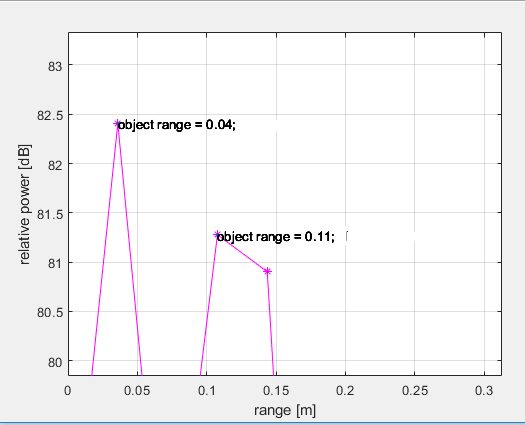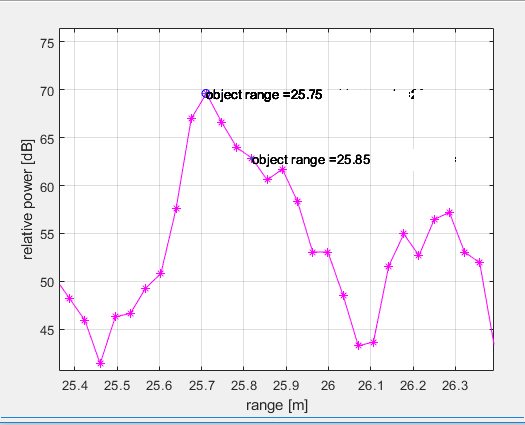Hello,
this is a question that has already been asked by other users but we are not fully satisfied by the reply.
I am just running the mmwavedemo visualizer demo. I am running the attached profile configuration.
/cfs-file/__key/communityserver-discussions-components-files/1023/profile_5F00_range29.65.cfg.
In this profile in which we have 1024 bins and a rangeIdxToMeters of 0.0359095.
This is the object values for a specific frame:
object.RangeIdx: 1, 3, 719, 716
object.X: -0.012000, 0.088000, -7.27100, -3.21900
object.Y: 0.0330, 0.0620, 24.809, 25.543
object.Z (all equal to 0)
object.euclidean (sqrt(x*x+y*y+z*z)): 0.03511, 0.10764, 25.8525, 25.7450
For example:
the sqrt(x*x+y*y+z*z) object range corresponds to what we see on the x-axis of the range profile (where the power peak is located), for both objects (0.035 and 0.107 euclidean range objects).
However, for long ranges, there is a discrepancy between the range profile and the object euclidean distance.
In this case there are around 0.0336 m difference between the object euclidean sqrt(x*x+y*y+z*z) range and x-axis value of the range profile bin (where the power peak is located), for both objects (25.745 and 25.852 euclidean range objects).
So in few words: the difference, between ( (sqrt(x*x+y*y+z*z)) ) and the range profile x-axis value, increases directly proportional to the range value. It always looks like the offset, between (sqrt(x*x+y*y+z*z) and range profile x-value, can be computed with offset= 4.680149319700316e-05* range, which leads to a difference of ca. 0.0336 m for the range bin nr 719.
Can anyone explain why we have this discrepancy?



